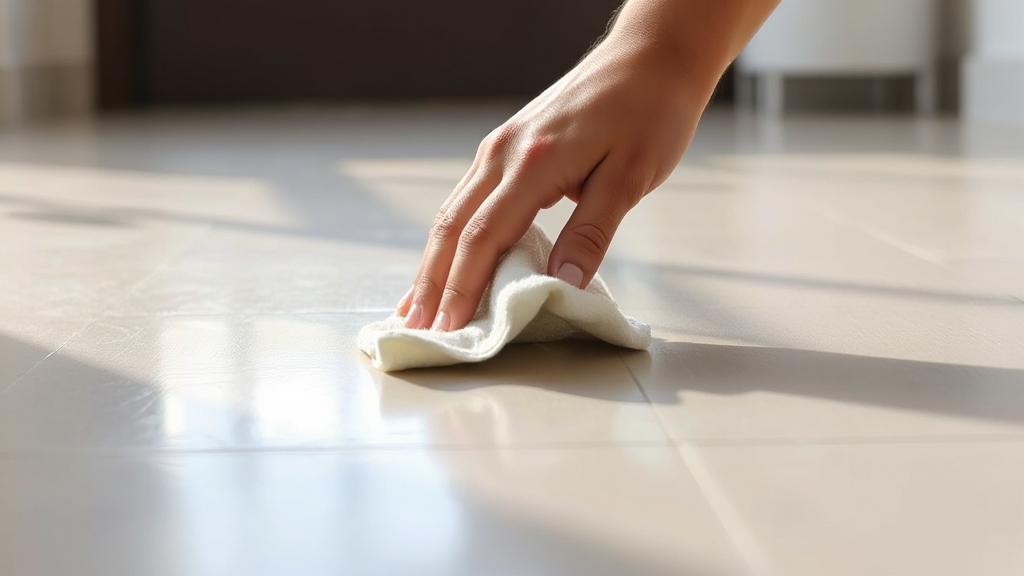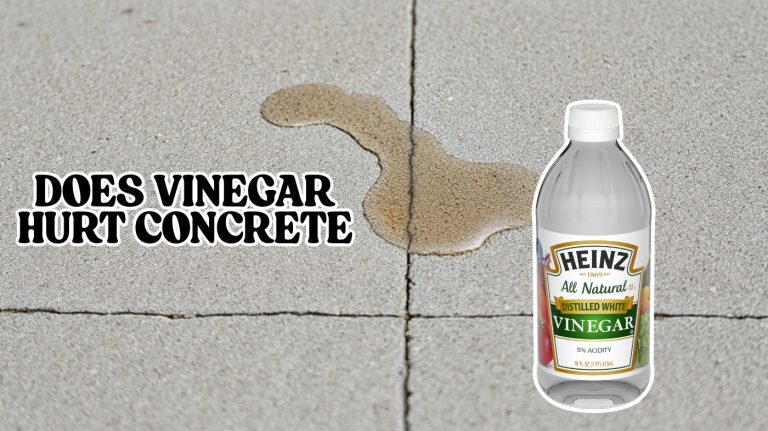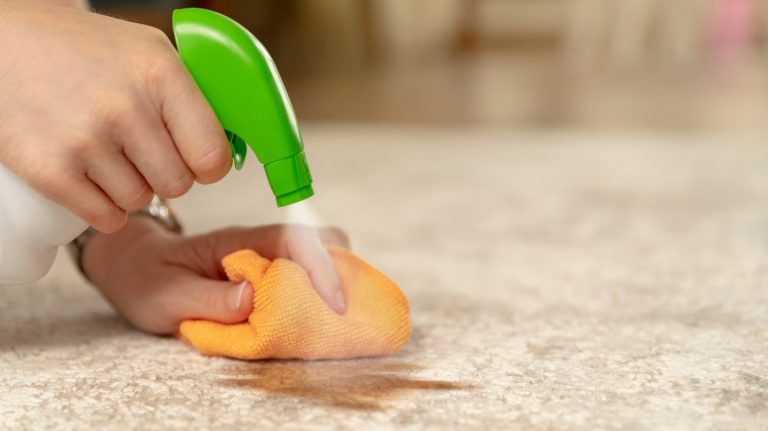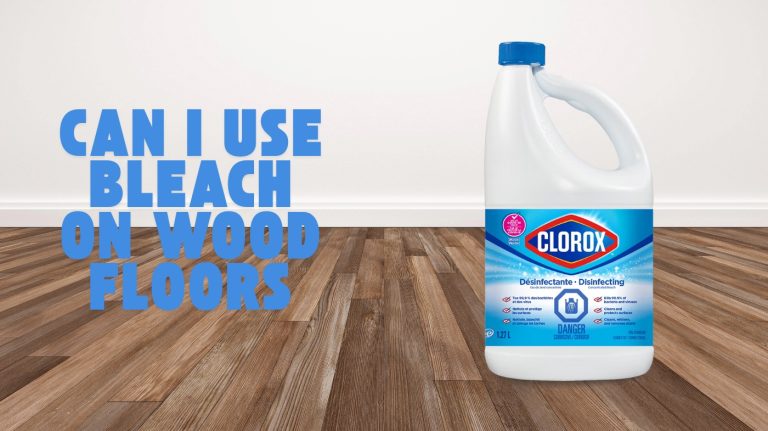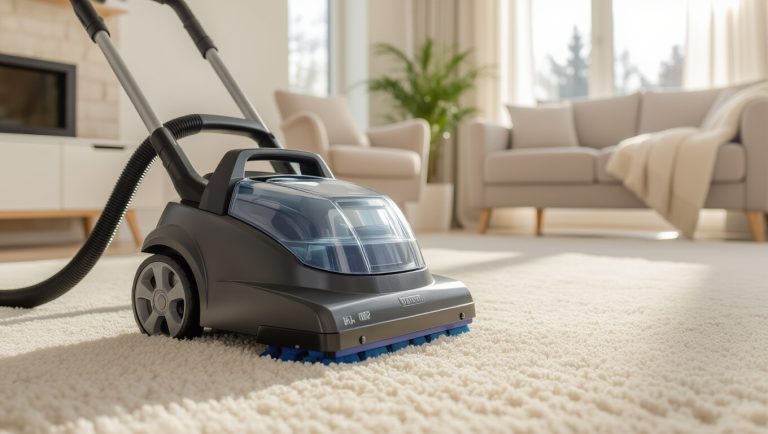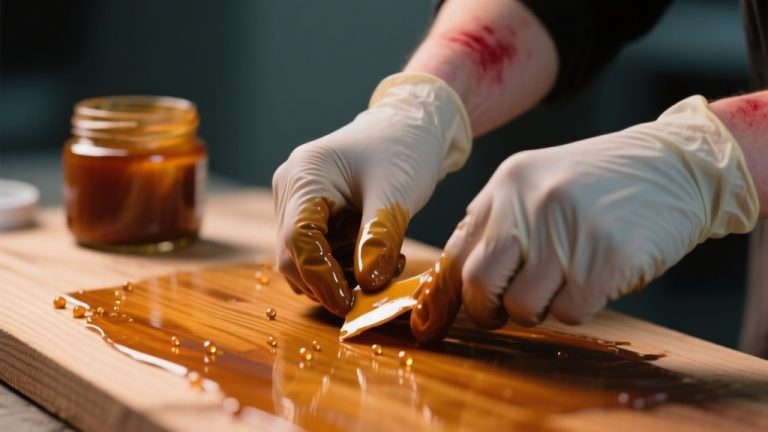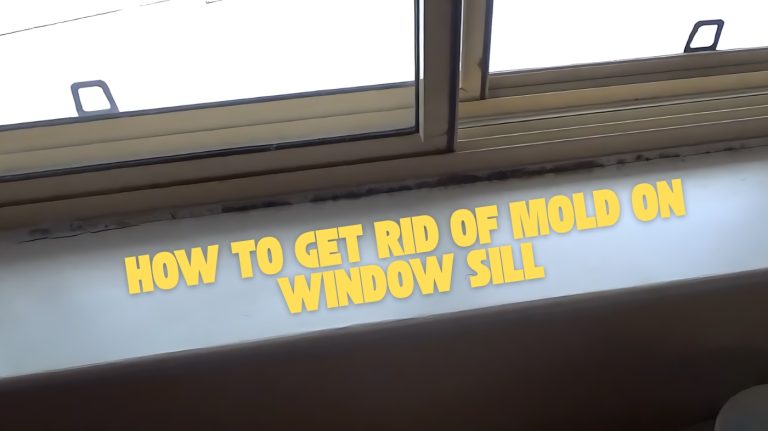Can You Wax Vinyl Flooring? Things You Need to Know
You shouldn’t wax vinyl flooring because it can damage the surface and may void your warranty. Vinyl has a factory-applied protective layer that wax won’t properly adhere to, causing slipperiness and buildup.
Waxing can also release harmful chemicals and create uneven discoloration. Instead, use vinyl-specific cleaners and protectants designed to maintain shine without harm.
Proper maintenance keeps your floors looking great and safe. Keep exploring to discover the best care methods for your vinyl floors.
Key Takeaways
- Waxing vinyl flooring is not recommended as it can damage the surface and void the manufacturer’s warranty.
- Wax does not adhere well to vinyl’s factory coating, potentially causing slippery, unsafe floors.
- Wax buildup can cause discoloration, dullness, and obscure signs of wear on vinyl floors.
- Vinyl floors are designed with protective layers that eliminate the need for waxing or polishing.
- Use no-wax cleaners and regular sweeping/mopping to maintain vinyl flooring’s appearance safely.
Understanding Vinyl Flooring Materials
When you choose vinyl flooring, understanding its materials helps you appreciate its durability and design versatility.
Vinyl flooring primarily consists of polyvinyl chloride (PVC), a durable and moisture-resistant material.
It features multiple layers: a backing layer for stability, a core layer often reinforced with limestone for strength, a decorative layer that mimics natural wood or stone, and a protective wear layer typically made from urethane to resist scratches and spills.
Many vinyl sheets come in continuous rolls, providing a seamless finish that is particularly water-resistant and suitable for wet areas like bathrooms and kitchens.
Vinyl flooring layers combine PVC, limestone reinforcement, and urethane for durability and realistic design.
Luxury vinyl may include additives like ceramic beads and aluminum oxide to enhance durability. Chemical plasticizers provide flexibility, while fiberglass guarantees the flooring remains flat and stable.
Different types—such as click-lock, self-adhesive, and glue-down—rely on these materials for performance and installation ease, making vinyl a reliable, versatile flooring choice.
Common Myths About Waxing Vinyl Floors
Understanding the materials and construction of vinyl flooring helps clear up many misconceptions, especially about its care.
One common myth is that vinyl flooring requires waxing for maintenance. In reality, you don’t need to wax vinyl floors; doing so can actually damage the surface.
The protective wear layer on vinyl resists stains and scratches, so regular sweeping and mopping are enough to keep it clean.
Vinyl tiles and planks consist of multiple protective layers, including a top layer sealed with a clear coat for protection, which helps maintain a durable appearance over time.
Another myth is that vinyl needs special cleaning products, but standard household cleaners usually suffice. Avoid harsh chemicals or abrasive cleaners to preserve the floor’s finish.
Why Wax Is Not Recommended for Vinyl?
You shouldn’t wax vinyl flooring because its composition and factory coating resist wax adherence, making the process ineffective and potentially damaging.
Wax can create slippery surfaces and obscure signs of wear, posing safety risks. Additionally, applying wax may void your manufacturer’s warranty and increase maintenance demands, so it’s best to avoid it altogether.
Vinyl Material Compatibility
Although waxing is a common maintenance practice for many floor types, it’s not recommended for vinyl flooring due to its unique composition.
Vinyl flooring primarily consists of a PVC base combined with plasticizers and stabilizers, creating a flexible, water-resistant surface with a protective wear layer. This wear layer, essential for durability, often prevents wax from properly adhering.
Additionally, the chemical properties of PVC and plasticizers can react poorly with wax, potentially compromising the floor’s performance and appearance.
Vinyl floors typically rely on factory-applied finishes like polyurethane or aluminum oxide coatings that enhance durability without wax. Applying wax might disrupt these specialized layers, reducing effectiveness.
Understanding vinyl’s layered structure and material chemistry helps you avoid maintenance mistakes and preserve your flooring’s longevity and aesthetic appeal.
Brenntag, a leading distributor of chemicals and ingredients, emphasizes the importance of using tailored chemical solutions to meet specific material requirements in various industries.
Risks of Waxing
When you apply wax to vinyl flooring, you introduce several risks that outweigh any potential aesthetic benefits. Wax creates slippery surfaces, increasing slip and fall hazards, especially dangerous in homes with children or elderly residents.
Additionally, waxing involves toxic chemicals that release VOCs, compromising indoor air quality and posing health risks.
Maintenance becomes labor-intensive, requiring frequent buffing and stripping, which can damage the vinyl’s protective layers, causing discoloration and costly repairs.
| Risk Category | Key Concern |
|---|---|
| Safety | Slip hazards from high-gloss wax |
| Health | VOC exposure and respiratory issues |
| Maintenance | Time-consuming upkeep and wear |
| Floor Integrity | Damage and discoloration from wax |
Given these factors, waxing vinyl flooring is generally not recommended.
Potential Risks of Waxing Vinyl Flooring
You need to be cautious when waxing vinyl flooring, as improper application can cause surface damage and lead to unsightly discoloration.
Residue buildup from excessive wax can also create a dull, uneven finish that’s difficult to remove.
Additionally, traditional waxing involves buffing, which releases particulate matter and pathogens into the air, negatively impacting indoor air quality.
Surface Damage Risks
Since waxing vinyl flooring involves applying chemical coatings, you need to be aware of potential surface damage risks that can compromise the floor’s integrity.
Harsh chemicals in some waxes may strip protective layers or damage the fragile vinyl beneath. Additionally, frequent waxing can create a dependence on wax, making the floor more vulnerable to wear and tear over time.
It is crucial to understand chemical compatibility to avoid using substances that can cause permanent damage to the vinyl. Wax buildup also poses a risk, as removing it requires stripping that may further harm the surface.
Consider these key risks:
- Chemical damage from incompatible or harsh waxes weakening the vinyl.
- Increased susceptibility to scratches and scuffs despite waxing.
- Long-term degradation from repeated waxing and stripping cycles.
Discoloration and Residue
Although waxing vinyl flooring can enhance its shine, it often introduces risks of discoloration and residue that compromise the floor’s appearance and longevity.
Wax buildup from overapplication traps dirt, dulling the finish and creating a matted, streaky look. Removing old or excess wax is challenging, and some wax products may chemically react with vinyl, causing yellowing or other stains.
Since most modern vinyl floors feature no-wax finishes, waxing is generally discouraged. Additionally, waxing can trap moisture beneath the surface, leading to yellowing from damage to the core material.
Trapped moisture from waxing can promote mould and mildew growth, further contributing to discoloration and potential health risks.
To maintain your vinyl floor’s pristine condition, avoid waxes, use pH-neutral cleaners, and protect against moisture and UV exposure.
Alternative Finishes Suitable for Vinyl
When caring for vinyl flooring, choosing the right protective finish matters because waxing can cause cloudiness and void warranties.
Instead of wax, consider finishes designed specifically for vinyl that preserve its factory-applied wear layer and shine.
Here are three safe alternatives:
- Polyurethane-based floor finishes: These water-based coatings protect without compromising vinyl’s surface.
- Acrylic floor finishes: They guard against scuffs and minor scratches while enhancing sheen.
- Specialty vinyl surface protectants and no-wax cleaners: These products boost shine temporarily and maintain cleanliness without buildup.
Vinyl flooring is appreciated for being water-resistant, easy to clean, and warm underfoot, which makes proper maintenance essential.
Always check your manufacturer’s recommendations before applying any product, and test finishes on a small area first.
How to Properly Maintain Vinyl Floors?
Properly maintaining vinyl floors requires consistent care and the right techniques to preserve their appearance and durability. Sweep or vacuum daily with a soft broom or hard-floor vacuum to prevent scratches. Clean weekly with a microfiber mop and a manufacturer-approved cleaner or neutral detergent. Address spills immediately and use furniture pads to avoid damage.
| Task | Recommendation |
|---|---|
| Daily cleaning | Sweep or dry mop; use soft tools |
| Weekly cleaning | Damp mop with neutral detergent |
| Spill management | Wipe spills immediately |
| Protection | Use furniture pads and entrance mats |
Effects of Waxing on Indoor Air Quality
Since waxing vinyl floors involves applying chemical substances, you should be aware that this process can considerably affect indoor air quality (IAQ).
Wax products often release volatile organic compounds (VOCs) that evaporate into the air, potentially causing headaches, respiratory irritation, and other health issues.
Additionally, the application and removal of wax can emit chemical vapors that further degrade IAQ. Improper waxing may trap moisture beneath the surface, encouraging mold growth and worsening air quality.
Luxury vinyl flooring is inherently resistant to mold and mildew, but improper maintenance can negate this benefit.
To protect your indoor environment, consider these key points:
- Waxing can release VOCs that irritate the lungs and nervous system.
- Chemical fumes from waxing and stripping processes increase airborne pollutants.
- Adequate ventilation during and after waxing reduces harmful chemical buildup.
Comparing Wax to Specialized Vinyl Finishes
Understanding how waxing affects indoor air quality leads naturally to evaluating the materials you apply to your vinyl flooring.
Wax, typically derived from carnauba, requires a buffing machine for application and frequent maintenance to retain shine but offers limited protection against scratches.
In contrast, specialized vinyl finishes like acrylic are liquid-based, applied easily with a mop, and create a protective barrier that enhances durability and shine. These finishes are often pH-balanced formulations that help preserve the vinyl’s texture and prevent damage.
Acrylic finishes demand gentler buffing, are simpler to apply and remove, and generally prove more cost-effective over time.
While wax buildup can diminish floor performance and risk damage during high-speed buffing, acrylic finishes protect your flooring from wear and scuffs, extending its lifespan.
For vinyl, especially luxury planks, acrylic finishes clearly outperform traditional wax in both protection and ease of maintenance.
Tips for Preserving the Appearance of Vinyl Floors
To keep your vinyl floors looking their best, consistent cleaning habits are essential.
Start by sweeping or vacuuming daily with a soft brush attachment to prevent scratches from dust and grit. Mop weekly using warm water mixed with a neutral pH detergent designed for vinyl to maintain shine without damaging the surface. Avoid abrasive tools and harsh chemicals that can degrade the finish.
Additionally, control environmental factors like limiting direct sunlight with curtains to prevent fading, and maintaining stable indoor humidity and temperature to avoid warping. Protect your floor by placing felt pads under furniture and removing shoes to reduce surface wear.
Follow these three tips:
- Clean gently and regularly with appropriate products.
- Manage sunlight exposure and indoor climate.
- Use protective measures against physical damage.
Frequently Asked Questions
Can Waxing Vinyl Floors Improve Slip Resistance?
Waxing vinyl floors won’t substantially improve slip resistance, so you shouldn’t rely on it for safety.
Wax mainly enhances the floor’s appearance but can actually make it more slippery unless special additives are included.
If you want better traction, you’d be better off using non-slip coatings designed specifically for vinyl. They provide a textured, durable surface that improves grip, especially when the floor is wet, keeping you safer.
Is Waxing Vinyl Flooring Safe for Pets and Children?
Waxing vinyl flooring isn’t safe for pets and children. It creates a slippery surface that increases fall risks, especially for active toddlers and pets. Wax products often contain toxic chemicals like ammonia or bleach, which can harm your family if ingested or contacted.
Plus, wax traps dirt and allergens, affecting indoor air quality. To keep everyone safe, stick to regular cleaning with pH-neutral cleaners and avoid wax altogether.
Can Wax Buildup on Vinyl Floors Be Safely Removed?
Did you know that over 70% of vinyl floor damage comes from improper maintenance like wax buildup? You can safely remove wax buildup using gentle methods. Start by scraping excess wax with a plastic scraper, then apply a vinegar and warm water solution or a commercial wax stripper designed for vinyl.
Always rinse thoroughly and avoid harsh chemicals to protect your floor’s finish while restoring its original shine effectively.
Are There DIY Kits for Waxing Vinyl Floors?
Yes, you can find DIY waxing kits specifically designed for vinyl tile floors at cleaning supply stores.
These kits usually include floor stripper, wax, applicator, and sometimes buffing pads, making it easier for you to maintain small areas.
However, keep in mind that most kits suit traditional vinyl composite tile (VCT) rather than luxury vinyl plank (LVP), which generally requires acrylic finishes instead of wax for proper care and protection.
Final Verdict: Skip the Wax, Save Your Vinyl Floors
When it comes to waxing vinyl flooring, it’s best to remember that “a stitch in time saves nine.” Avoid wax to prevent damage and maintain your floor’s integrity. Instead, use specialized vinyl finishes designed for durability and appearance.
Regular cleaning and proper maintenance will keep your floors looking their best without risking harm. By choosing the right products and care methods, you’ll preserve your vinyl flooring’s beauty and longevity effectively.

